Tanzania, located on the east coast, contains some of Africa’s most famous tourist destinations. For many who dream of an African safari, to climb Africa’s highest mountain and/or to visit the exotic Zanzibar Archipelagoes come to Tanzania. It is country with a tumultuous and fascinating history, from the world’s shortest war (46 minutes), to the notorious African slave trade. Due to an outbreak of sleeping sickness in the Game parks in southern Tanzania we headed directly for Dar es Salam a two day drive from the border. The national road passes through the Mikumi Game Park.
Enlarge

Adventurouspirits
We arrived in Dar es Salaam, the largest city in Tanzania (pop 3million), at rush hour. The road into Dar (as the locals know it) was an assault on our senses. It was chaos, miles of slums, chaotic traffic and buses loaded with people both inside, and hanging on the outside and with luggage piled high on the roof. Hooters blasting, traffic lights not working, it was overwhelming and yet somehow traffic was moving.
Enlarge

Adventurouspirits
After what seemed an eternity, we arrived at the Sea Cliffs Hotel, overlooking the Indian Ocean. Here we had a celebratory drink, since we had crossed the African continent west to east. We left the cold and stormy Atlantic Ocean three months earlier, and now we were watching the warm tropical waves wash up on the eastern shore. We enjoyed our refreshing drinks in the warm tropical breeze with feelings of gratitude and a sense of accomplishment.
Enlarge

Adventurouspirits
We camped south of the city and had to take a local ferry across the estuary to get to and from the city each day.
Enlarge

Adventurouspirits
With thousands of miles between ourselves and family and friends, we woke up on Christmas morning in a hot and humid Dar-es-Salaam and the first order of the day was to exchange gifts. A family tradition for us has been the delight of finding the coin in the Christmas pudding. The one who gets the coin is destined for a wonderful new year. There would be no Christmas pudding this year and definitely no coin. However, to my delight I was presented with six little Christmas pies one supposedly with a coin. Of all the things we budgeted for, soap has been a huge cost that we had not anticipated. Not that soap is expensive it is simply that Tom tends to leave his soap in the showers, dotted across the African continent. So, with a screwdriver, soap and a piece of string I made him “soap on a rope.”
Enlarge

Adventurouspirits
After lots of laughs, we decided, to spend Christmas day on the island of Unguja, the main island of the Zanzibar archipelago, and a two-hour ferry ride away.
Enlarge
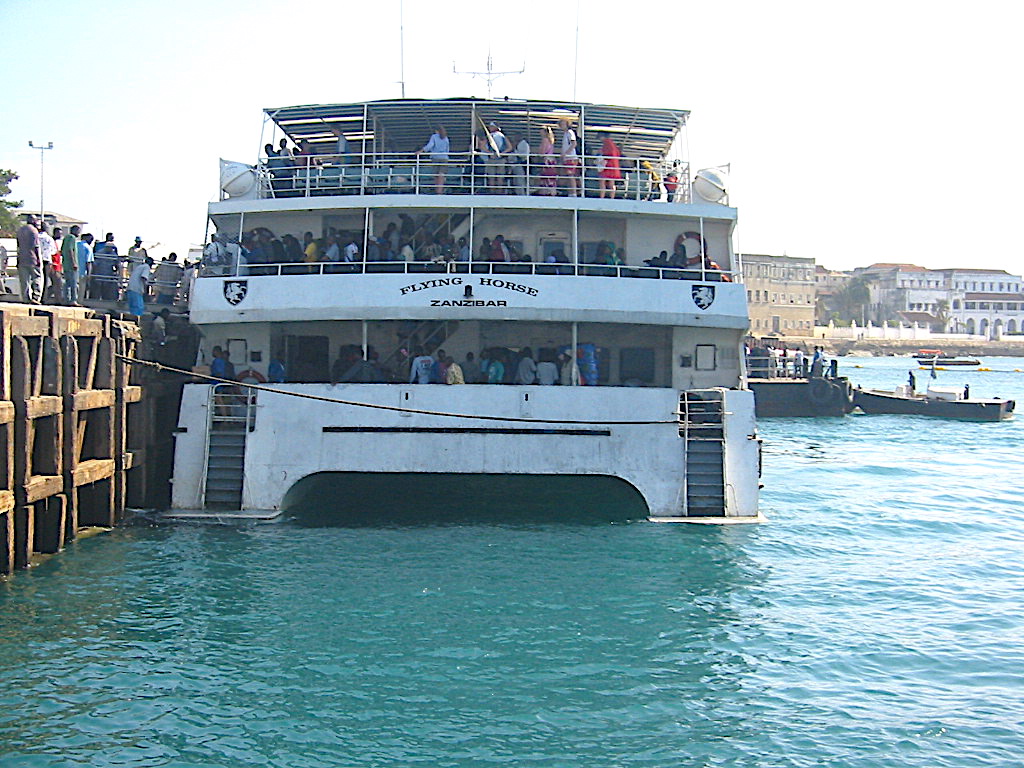
Adventurouspirits
Unguja, the largest island of the Zanzibar archipelago (confusingly also called Zanzibar Island), lies 35 km off the coast from Dar es Salaam. Stone Town, the capital of Unguja is one of the world’s most alluring cities.
Enlarge
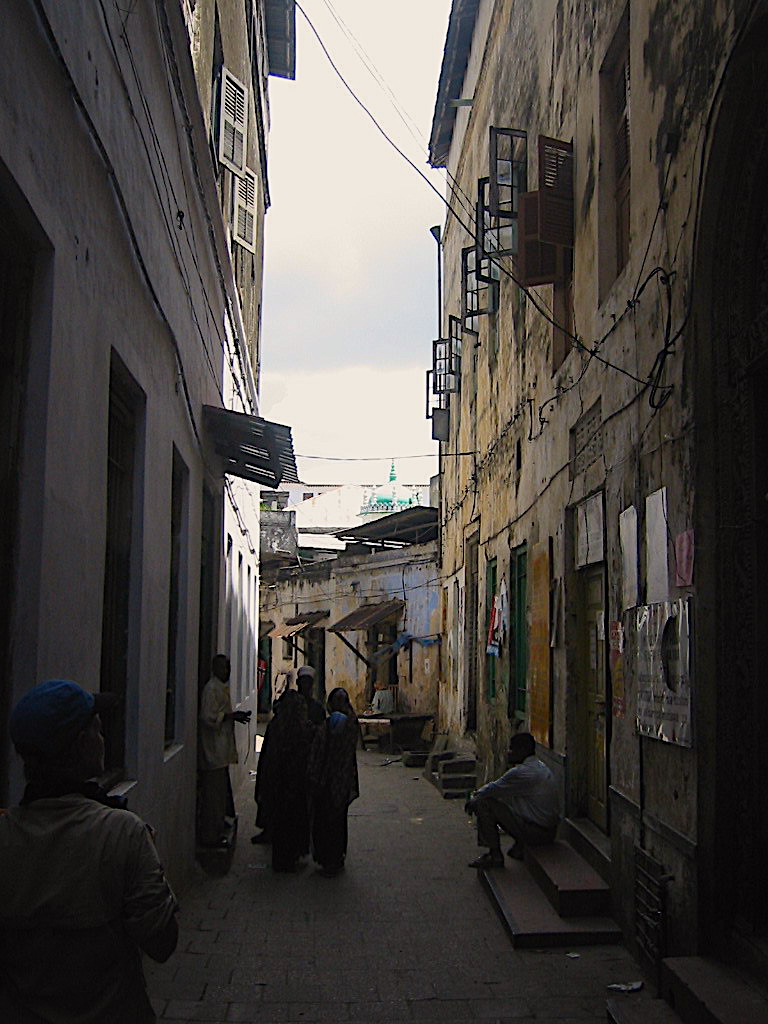
Adventurouspirits
It has a fascinating and complex history, the result of its strategic position at the confluence of many trade routes, an important port for many numerous trading nations. First, the Bantu used it then the Portuguese, followed by the Arabian, East Indies, Germans, and the British. It is where Africa meets the Orient and the locals now an eclectic mix of Bantu, Indians, Arabs, and European. It is such an important “material manifestation of cultural fusion and harmonization” that UNESCO has declared it a World Heritage Site. We spent the short time we had taking in the sights, sounds and smells of the old city also known as the “city of spices.”
Enlarge

Adventurouspirits
Whilst the old buildings definitely show signs of age and are in need of some repair, the city has a charm and a laid back delight all of its own. The people are friendly and helpful, sometimes too much so. The most remarkable feature of these distinctly Arabic structures is the large beautifully carved wooden doors. These doors and door frames became the favoured means of expressing the grandeur and opulence of ones mansion. They are ornately decorated with intricate patterns involving many different symbols, most commonly fish for fertility, prayers from the Koran for protection, and large brass studs, originally intended to keep away the elephants, which apparently where plentiful on the island at that time.
Enlarge
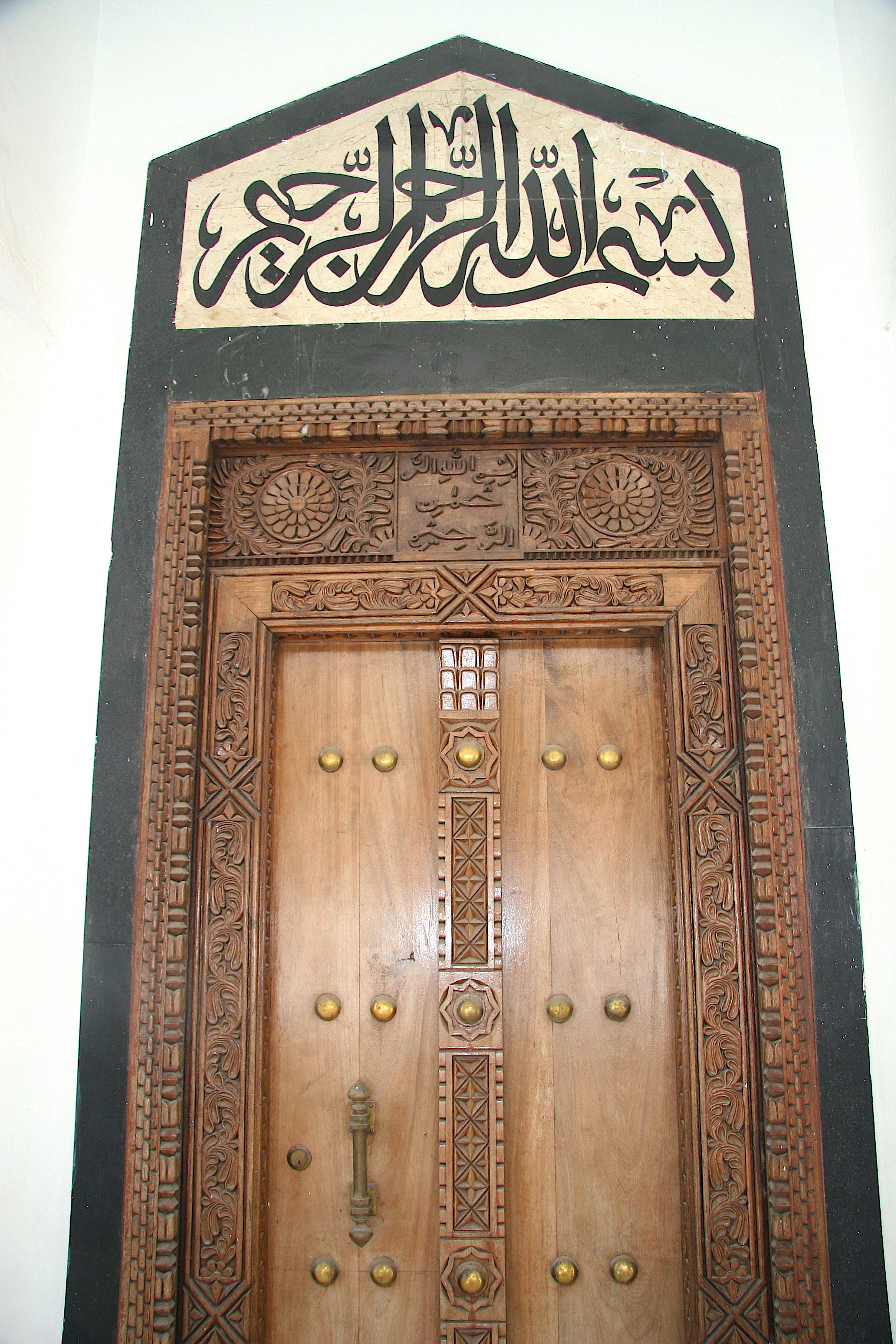
Adventurouspirits
We were also given a sober reminder of the island’s dark side, when we visited the slave museum. This museum provides a devastatingly poignant memorial to the horrors of the slave trade.
Enlarge

Enlarge

Adventurouspirits
“Those who deny freedom to others, deserve it not for themselves” Abraham Lincoln
Wandering through the streets we came upon a skilled boatbuilder still doing it the old fashioned way.
Enlarge

Adventurouspirits
Enlarge

Adventurouspirits
Ice cold freshly squeezed cane sugar juice was a tasty thirst quencher in the 30deg heat
Enlarge

Adventurouspirits
During the two hour, ride back to Dar-es-salaam we had lots to reflect on as we glided over the blue tropical waters in a high speed ferry, easily passing the local fishermen plough through these waters in their ancient Arab dhows
Enlarge

Adventurouspirits
We stopped at the village of Bagamayo so we could visit the church through which Dr. Livingstone’s body passed on its way to Britain. He is buried in Westminster Abbey, but his heart was removed and is buried in the spot where he died in a small village of Ilala. Where he was working at the time of his death.
We celebrate New Year in Pangani. a lovely campsite right on the beach.
Enlarge
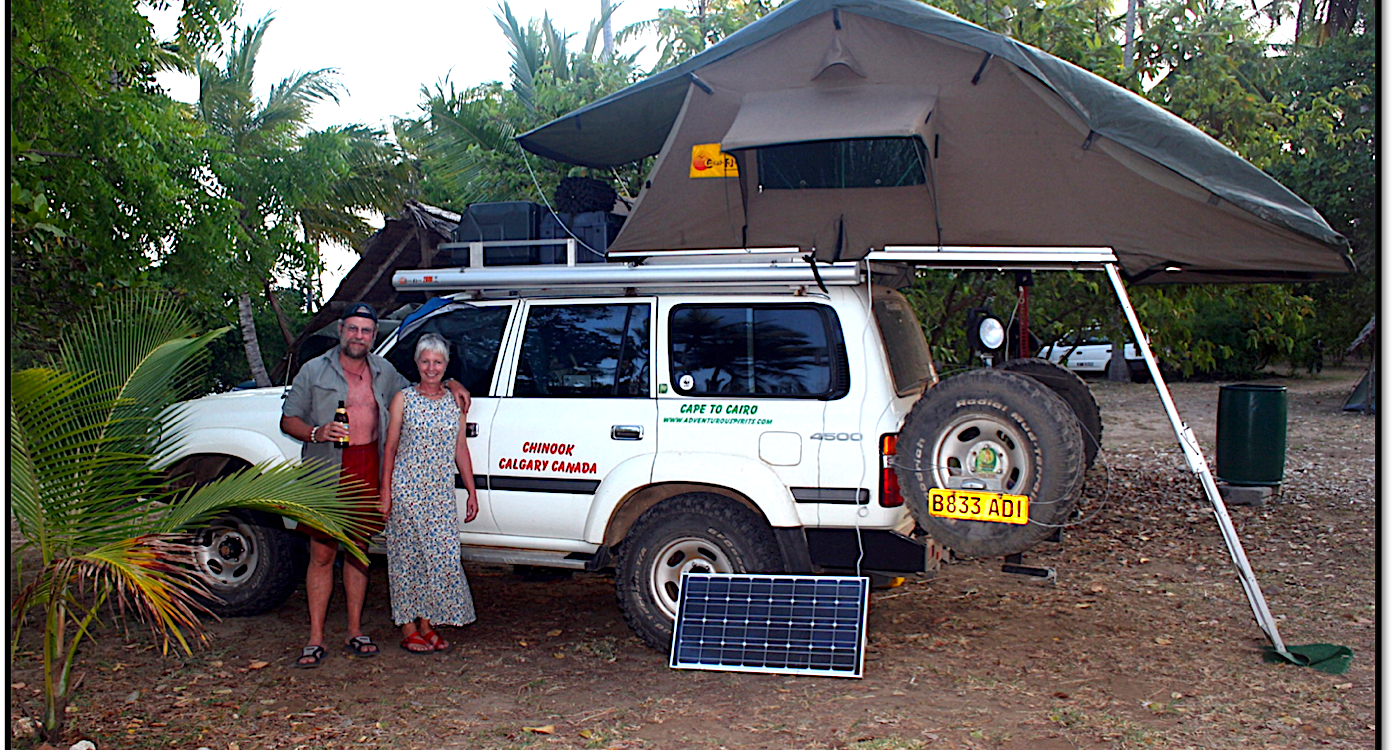
Adventurouspiris
Enlarge

Adventurouspirits
Ever since we started SCUBA, we have dreamed of swimming with the world’s largest mammal, the whale shark. We were therefore thrilled to read in one of our tour guides that these enormous creatures (30m) are regular visitors to Kenyan Coast each January and February. One of the books stated that “one can be guaranteed” to see a whale shark at a place called Watamu during these months. On checking the map, we discovered that Watamu lies some 150kms north of Mombasa, from which we were only a day’s drive. We decided therefore, to alter our original route and head north into Kenya to try to see these stunning animals.After a short drive, we arrived at the coastal resort town of Diani Beach.
Enlarge
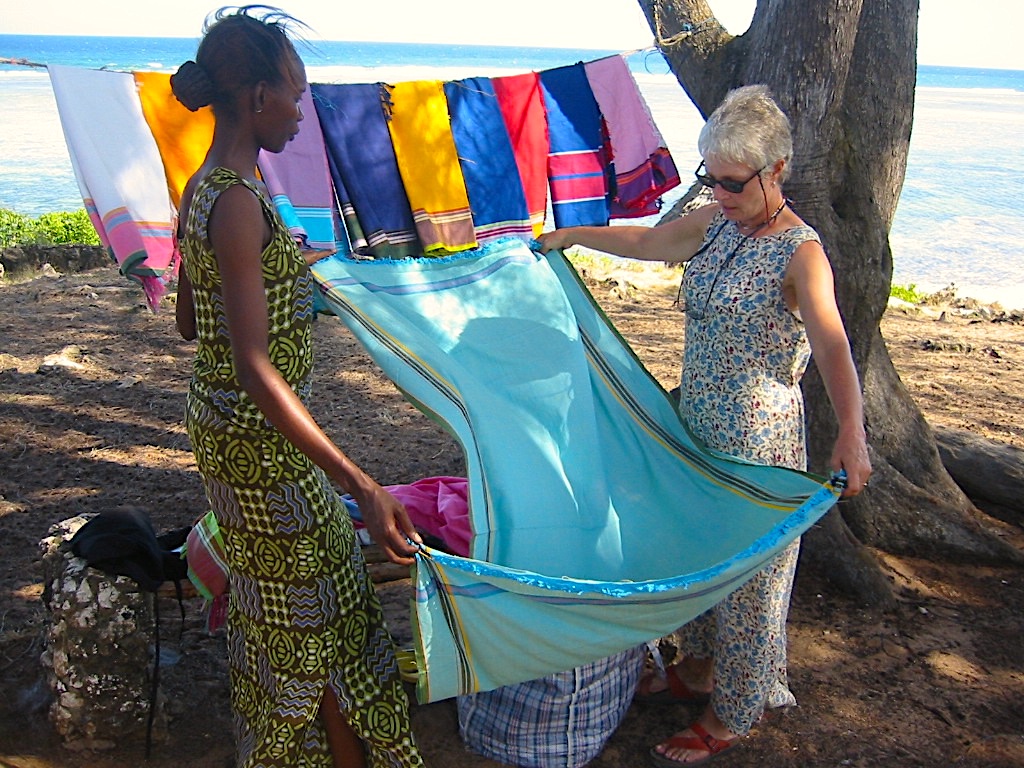
Adventurouspirits
The incredible palm-fringed 18km long white soft sand beaches of this part of the Kenyan Coast have unfortunately become the destination of choice for thousands of wintering Europeans. The entire coastline North and South of Mombasa is littered with upscale all-inclusive resorts, where Italian, German and other European languages areas as common as Swahili. After a frustrating search, which included an ill-timed attempt to venture into Mombasa, we finally found a delightful campsite with a small private beach, which we used as a base to try to find a suitable diving operator to take us to the whale sharks. Every dive operator in the area had the same sad story. This year the whale sharks were not as plentiful as usual. One had been seen ten days previously but none since. Apparently, their appearance has something to do with the water temperature. They migrate between Antarctica and the Red Sea each year in search of krill and plankton, their regular diet. If the water temperature is a chilly 26 degrees (Celsius) then they move on. If it is a comfortable 28 degrees, they stick around for a while. So armed with the information we selected to dive on some reefs in Diani Beach rather than incur the extra expense and inconvenience of driving the extra 150kms to Watamu, our original destination, with no certainty of seeing our illusive target.As we entered the warm tropical waters and sank below the waves the big question on our minds was would be lucky or would we have to keep searching the world. The first dive was on a beautiful reef filled with lots of interesting and colourful corals and fishes, and our second dive was a drift dive on a similar reef lying just to the south. No luck. Our search for the whale shark continues, but we did have a very enjoyable visit to the underwater world of the East African Coast.
Enlarge

Adventurouspirits
We had observed from our maps that we were only about 50kms from Mt Kilimanjaro as the crow flies, but we thought that we could not see it due to the haze created by the very dry and dusty conditions Kenya was experiencing at present. The real reason we did not see it was because we were not looking high enough. At 19,500 feet, it looms high above any of its closest neighbours, way above the clouds. Once we adjusted our gaze upwards it appeared like an apparition amongst the clouds. It is absolutely breathtaking in its grandeur. Sitting on the verandah watching the sun setting behind its snow capped peaks, with zebra, elephant, and warthogs taking a refreshing drink in its shadow was a moment to be savoured. It is quintessential Africa.
Enlarge
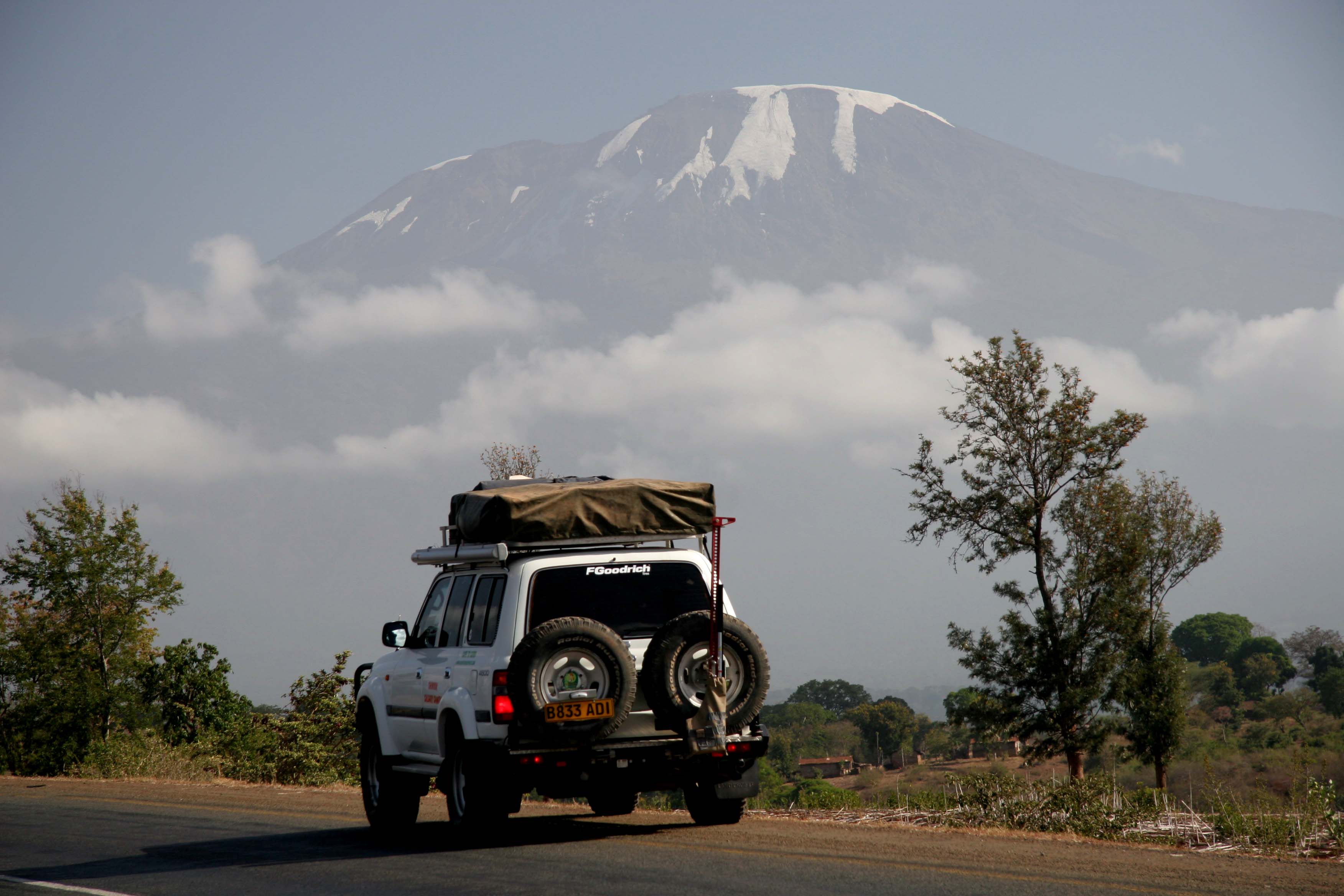
Adventurouspirits
The town of Arusha lies at the base of mount Kilimanjaro and acts as a staging point for the 12000 climbers that attempt the arduous trek up Mt Kilimanjaro every year.
Enlarge
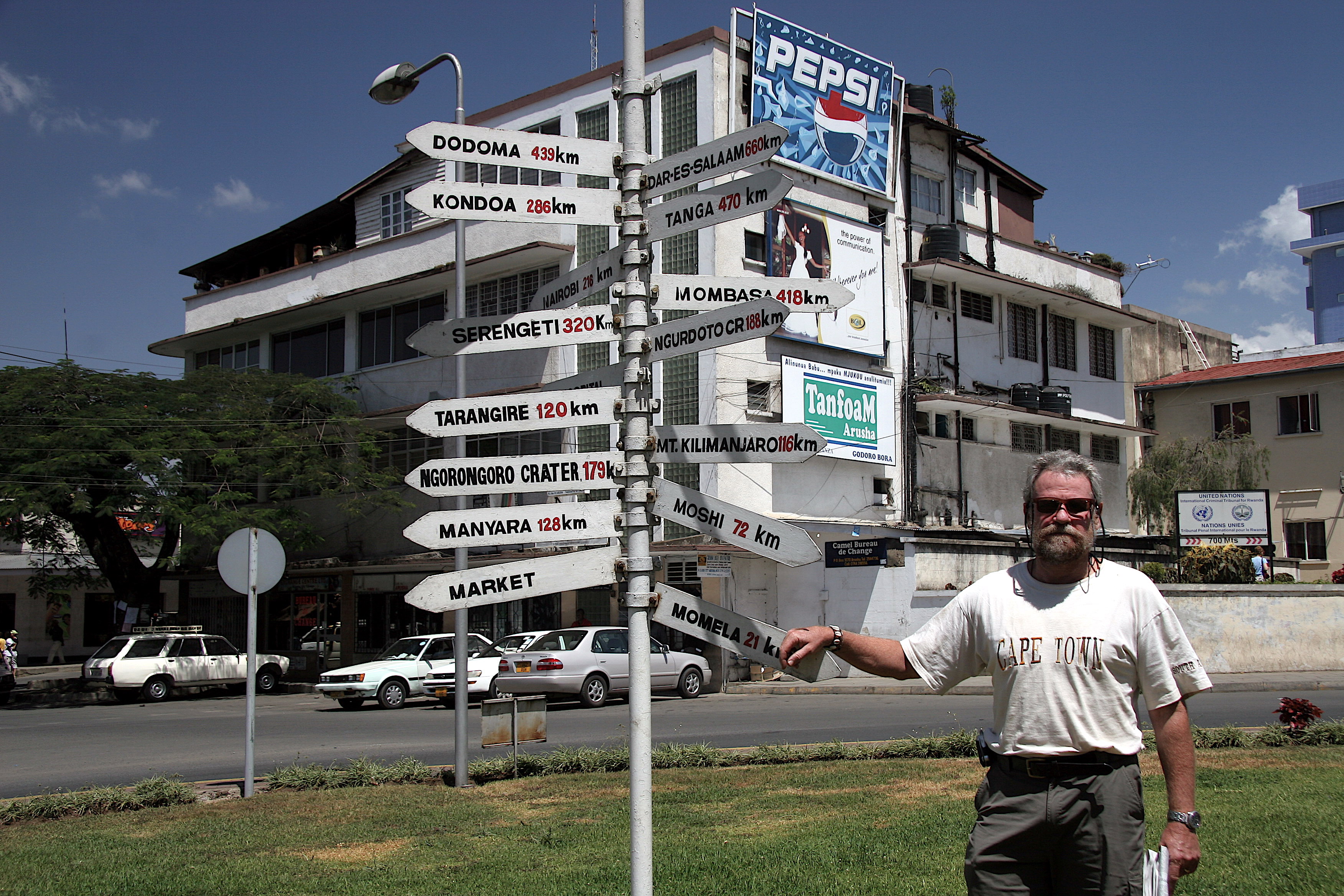
Adventurouspirits
It also served as the town in which the horrors of the Rwanda genocide was retold in an attempt to find and punish those who were responsible for the atrocities.
Enlarge

Adventurouspirits
After an early morning start from Arusha, we arrived at the Ngorongoro Conservation area. After paying US$230.00 the entrance fee for a 24-hour period, which included US$100.00 to drive our car down into the crater, we headed for the descent road down to the crater floor. At these prices, there was no discussion and the decision was simple; we would only be in the Ngorongoro Conservation Area for 24 hours. The Ngorongoro Crater is the world largest caldera and on a clear day one can see the other side of the crater 20km away. The floor of the crater is typical African “bush” consisting of savanna grassland with scattered thorny acacia trees. The view from the top of the crater is truly magnificent and we could see the herds of 1000’s zebra and wildebeest 600m below.
Enlarge
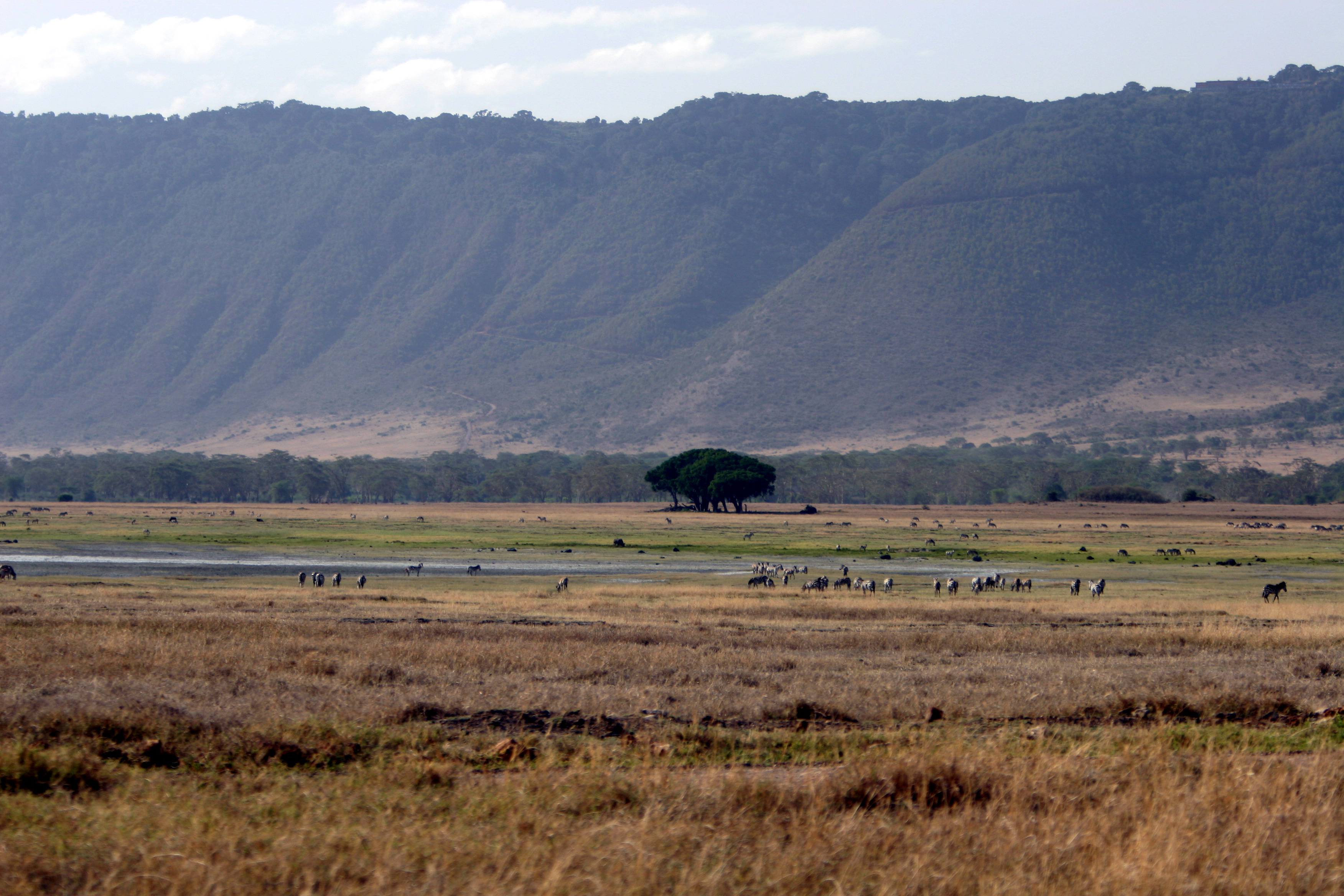
Adventurouspirits
The area is in desperate need of rain, the grass is brown, and rivers are dry. One of the most fascinating aspects of the crater was watching the local Masaai herdsmen take their cattle down into the crater for grazing.
Enlarge

Adventurouspirits
We spent the day watching lion, lone elephant bulls, large herds of buffalo, zebra, wildebeest, and several species of antelope, hippos, monkeys, baboons, and colourful birds. We were just about to leave when we received a real treat of watching a cheetah, our first cheetah seen in a game park. The fastest animal on earth and yet she strolled across the road for us, lingering alongside before disappearing behind some rocks.
Enlarge

Adventurouspirits
Enlarge
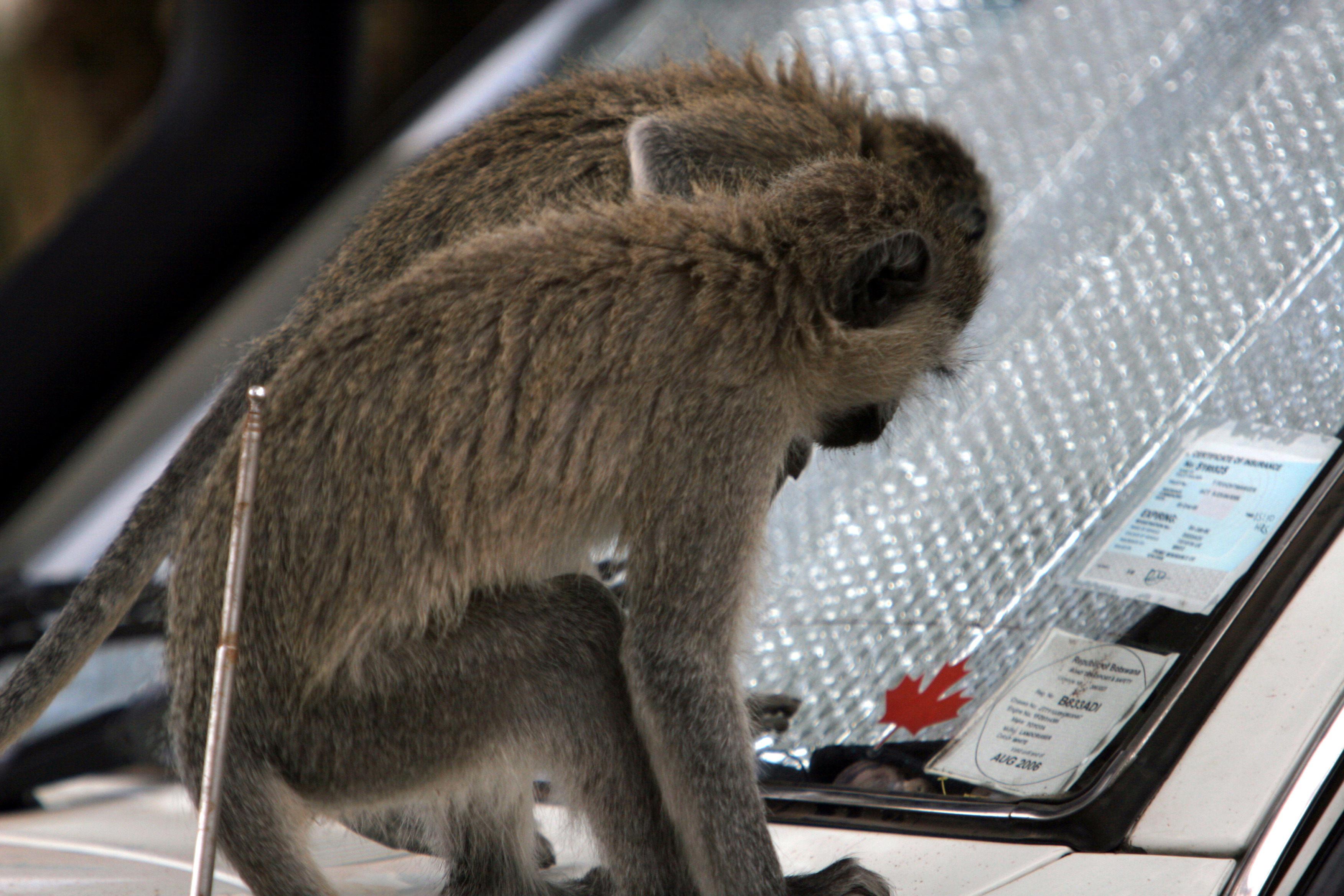
Adventurouspirits
Enlarge

Adventurouspirits
After emerging from the crater floor at the end of the day by having to drive up a steep and rutted dirt road, we left the crater with a sense of wonderment; the Ngorongoro Crater is Africa at its finest.
Serengeti is Tanzania’s largest and most famous national park. Covering some 14,763 km² of vast African savanna plains, it is home to over several million animals including all the predators. It offers outstanding safari opportunities, and we spent a spectacular day in the vastness of the Africa bush, grasslands, trees, and rocky outcrops. The wildlife we saw was so plentiful that it is impossible to describe the scenes accurately. Serengeti is famous for its huge wildebeest migration and we were seeing some of the tail end of their continual hunt for water and grazing, as they move from the south to the north (Masaai Mara) and back again. We were put into a kind of quiet disbelief as we witnessed this Eden.
Enlarge

Adventurouspirits
Enlarge
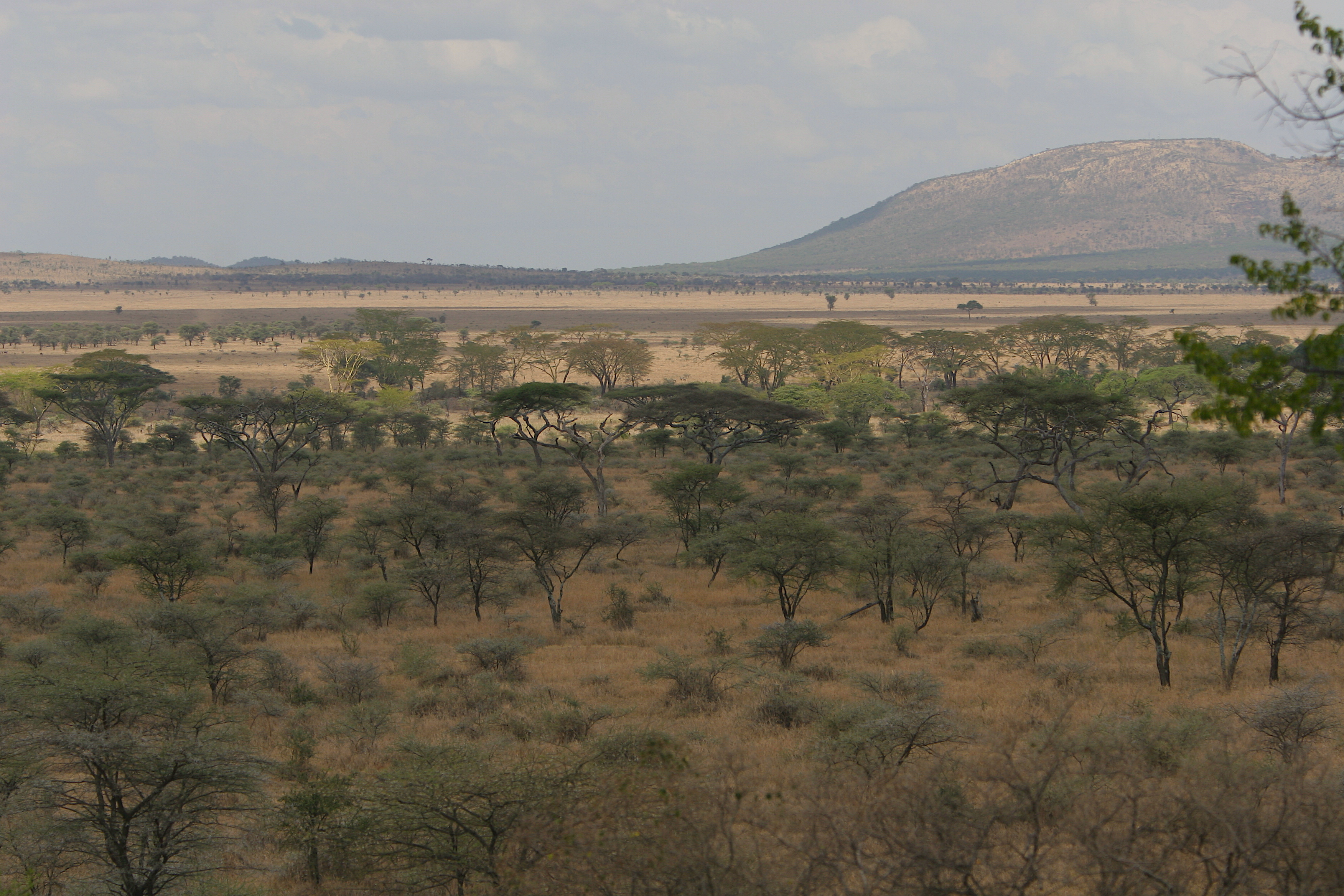
Adventurouspirits
Waterholes are always a great place to see game.
Enlarge
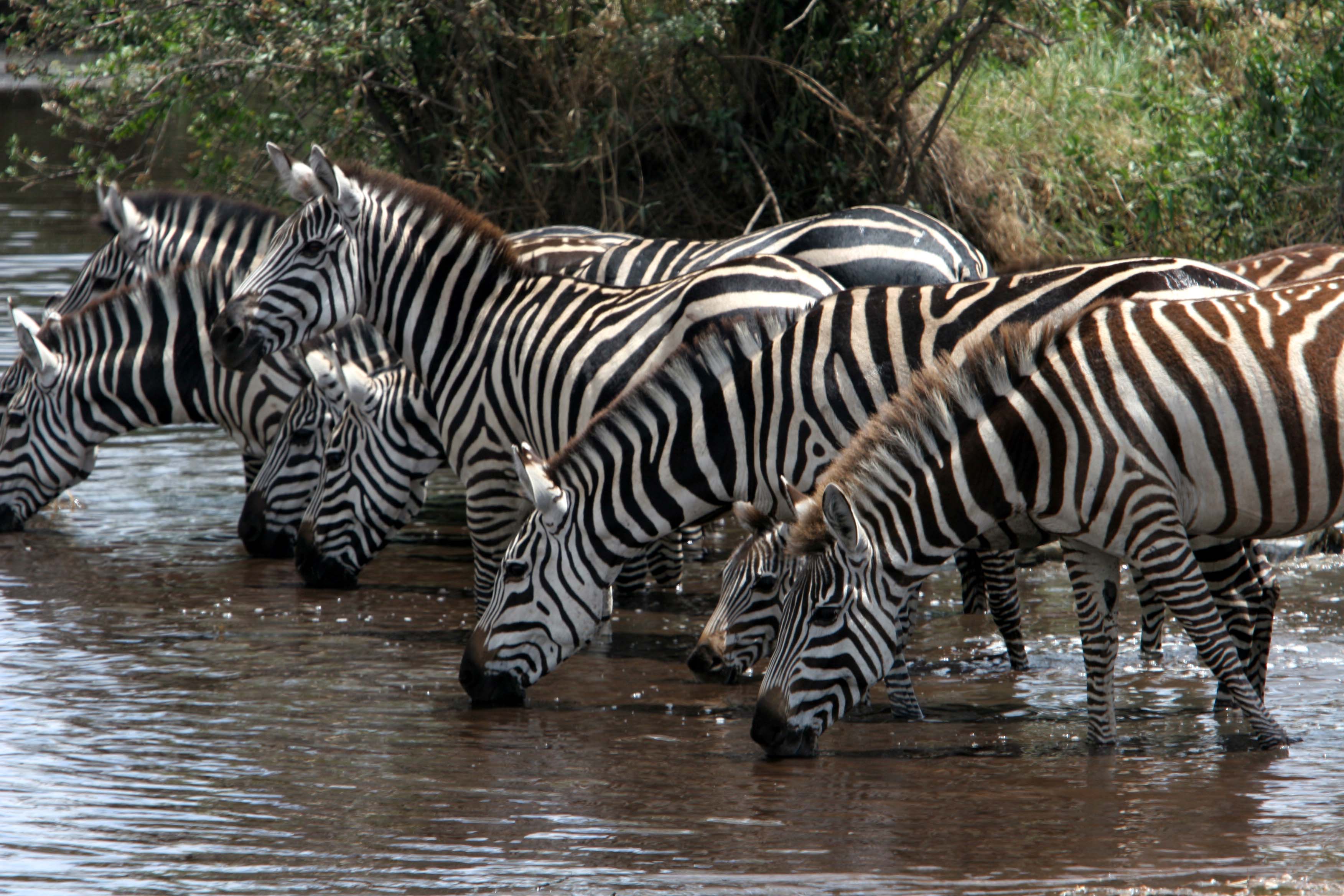
Advebnturouspirits
Baby zebras start life with a brown coat which turns white as they mature.
Enlarge

Adventurouspirits
Enlarge

Adventurouspirits
That evening we pitched our tent at a public campsite, alone with a troop of olive baboons. Colourful characters, who apart from stealing Tom’s shoe, left us alone.
Enlarge

Adventourspirits
The following morning we were up early and on the road by 0530 since once again we had to make a mad dash to the exit gate, requiring rally driving speed and skill. Moreover, it had rained all night so now we had mud as well as all the other road hazards to negotiate. The investment in top of the line mud designed tires paid off handsomely. On the drive out, we passed 8 lions walking on the roadside, along with elephants, cheetah, thousands of wildebeests, zebras, large herds of buffalo and other wildlife but there was no time to stop. We needed to make the gate before our 24-hour limit was up. This time we made it with 2 minutes grace. I think the Tanzanian wildlife official was disappointed. We then drove to Lake Victoria, a short 15km of good-tarred road to the west. Here we had a well-earned full English breakfast at a beautiful resort on the shores of this legendary body of water. Our next destination is Mwanza, Tanzania’s second largest city.
The Village of Mwanza lies on the shore of Lake Victoria. Its picturesque setting belies a dirty secret.
Enlarge

Adventurouspirits
The Nile perch which was introduced by the British into Lake Victoria for sport fishing has grow to an enormous size destroying the endemic species. It has spawned a local fishing industry which has a dark side. This is documented in the movie “Darwin’s Nightmare”.
Enlarge
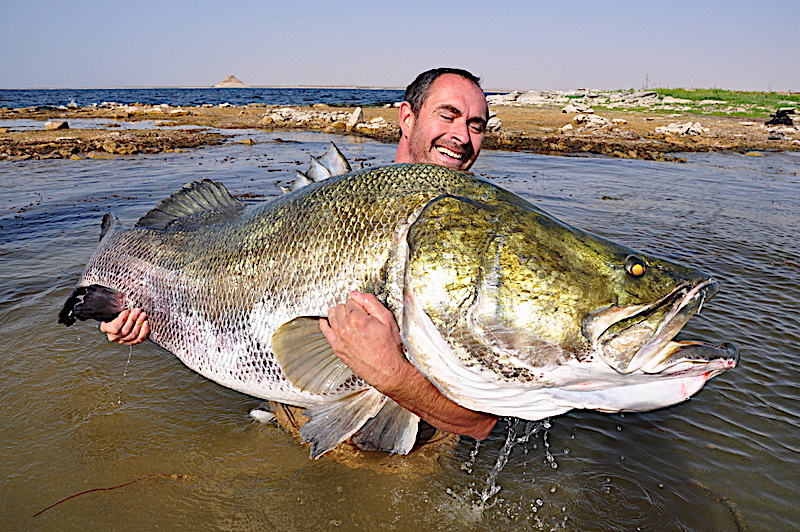
www.African Angler.com
We book into a local hotel since the Landcruiser needs some repairs. We re thrilled to see a toilet seat. Something we haven’t had the pleasure of using for a number of months.
Enlarge
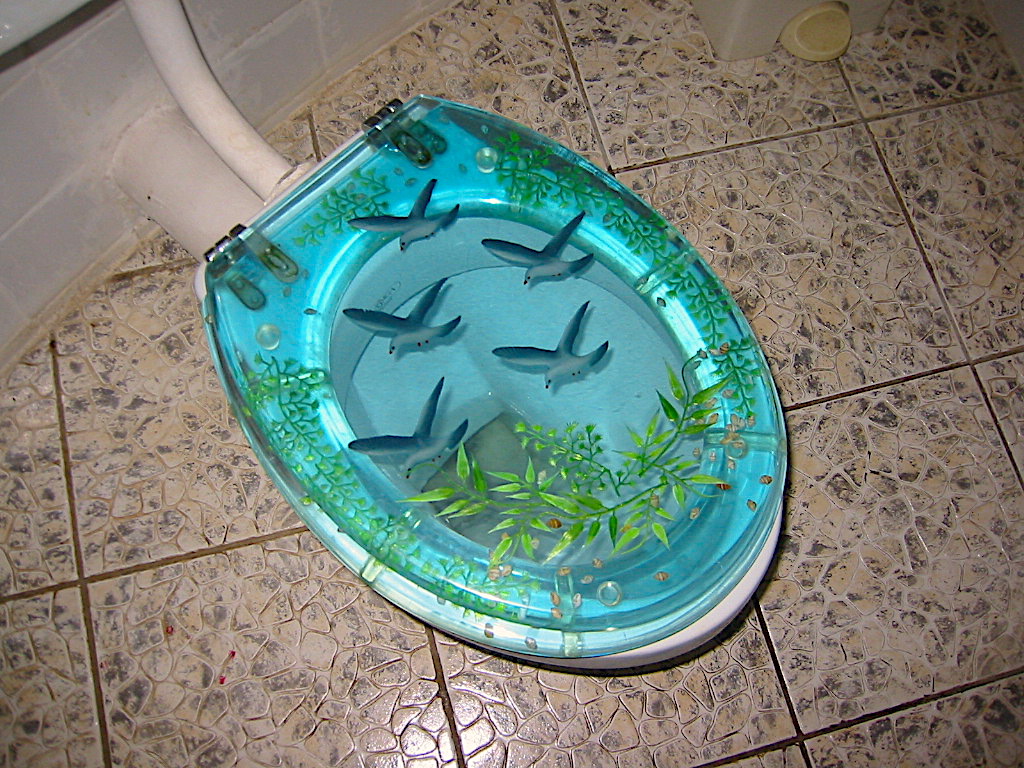
Adventurouspirits
Despite being warned that the road from Mwanza to Rwanda was dangerous due to the number of Genocide refugees in the area we decided that it was okay to use if we proceeded cautiously.
Enlarge
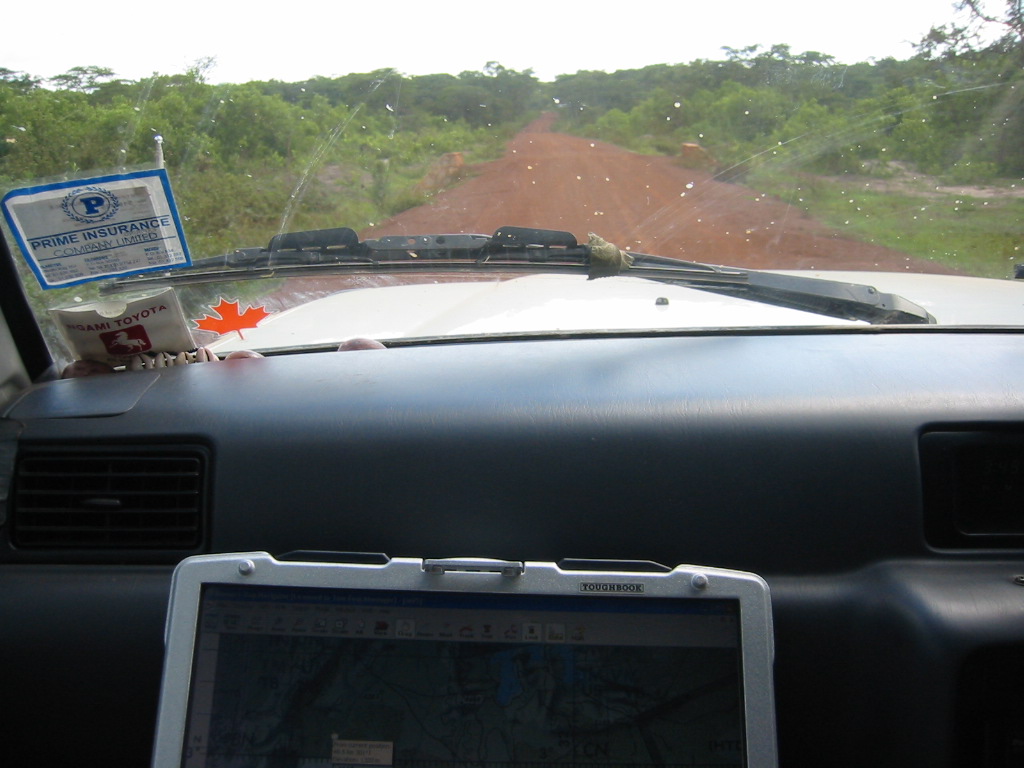
Adventurouspirits
The kind nuns at the local Anglican Mission allowed us to camp in their yard so that we be safe. We were very grateful.
Enlarge
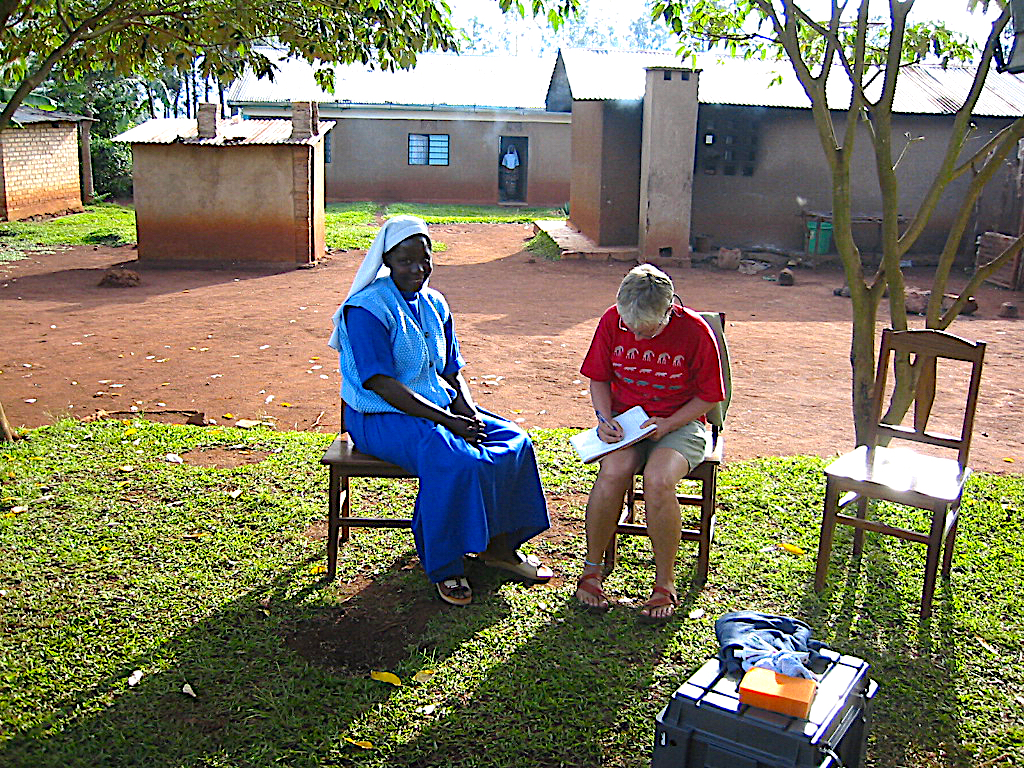
Adventurouspirits
Next stop the Rwandan Border.
